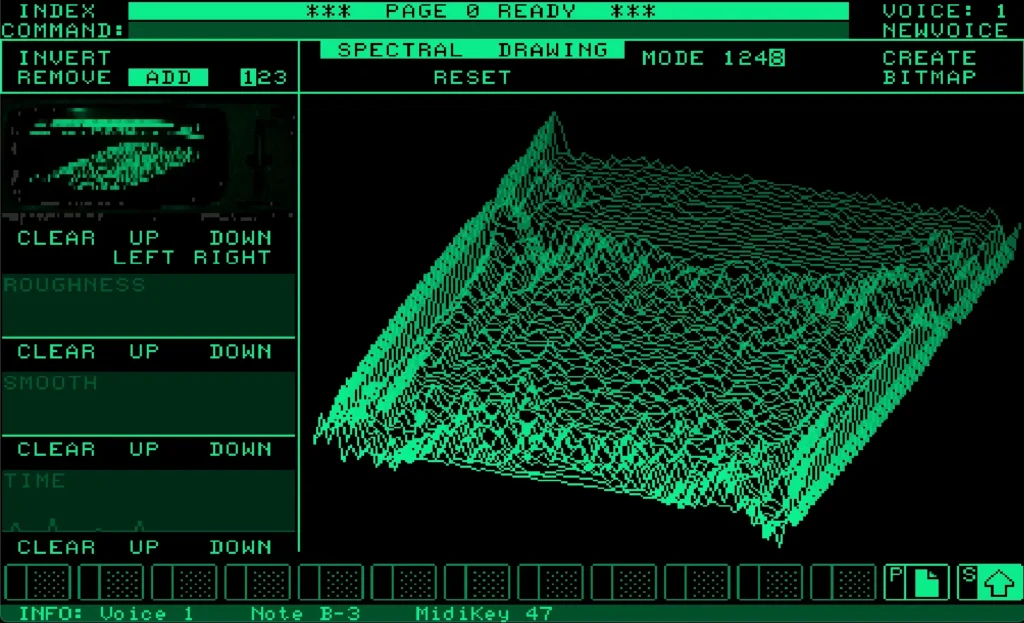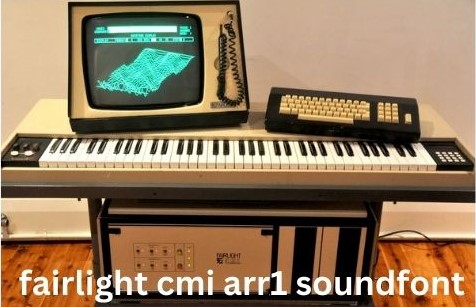Introduction
Thus the Fairlight CMI ARR1 soundfont becomes an interesting topic for musicians, producers, as well as sound designers. Its rare history and possibilities to create various sounds has made the Fairlight CMI an essential tool for music production from the 1980s. As promised at the beginning of this article, let me present you with the history of Fairlight CMI ARR1 soundfont, its key characteristics, and ways to use this tool in your musical projects.
What is the Fairlight CMI ARR1 Soundfont?
Arr1.ffp is the sound libraryaudio samples that were obtained from the famous instrument Facilities of the Fairlight CMI. The Fairlight CMI was one of the first digital samplers that was launched in the late 1970s and the only one that enabled the user to record sound samples and manipulate them in very unique ways. By using the ARR1 soundfont it is possible to listen to what this innovative instrument was like, and welcome new ideas and approaches for playing it.
The Historical Significance of the Fairlight CMI
To that end, it is important that one grasp the history of the Fairlight CMI to appreciate the Fairlight CMI ARR1 soundfont. Launched by Peter Vogel and Kim Ryrie as a musical instrument the Fairlight CMI was a technological product of its time. It incorporated sampling, sequencing and synthesis; here musicians were able to produce music pallets that were hitherto unthinkable.
Also read: Pyohio 2022 shreya khurana
The Impact on Music Production
These events revolutionized the course of music production by the arrival of the Fairlight CMI. House was as a tool that gave musicians the freedom of creating and shaping sounds which were unattainable with conventional instruments. The likes of Peter Gabriel, Kate Bush and Herbie Hancock were some of the artists that incorporated the Fairlight in their music, to display its versatility. This soundfont is continued by the Fairlight CMI ARR1 which makes these timeless sounds available to a new generation of musicians.
Key Features of the Fairlight CMI ARR1 Soundfont
The Fairlight CMI ARR1 sound boasts several key features that enhance its appeal to modern music producers:
Authentic Sounds
The primary draw of the Fairlight CMI ARR1 soundfont lies in its authentic emulation of the original Fairlight sounds. Each sample is meticulously crafted to preserve the unique characteristics of the Fairlight’s audio output, allowing users to replicate the sounds that defined an era. This authenticity adds depth and richness to contemporary compositions.
Versatile Applications
The versatility of the Fairlight CMI ARR1 sound allows it to fit into various musical styles. Whether you are producing pop, electronic, hip-hop, or experimental music, the soundfont’s diverse range of instruments—from strings to brass to percussion—makes it an excellent choice for any genre. This adaptability is invaluable for musicians looking to expand their sonic palette.
User-Friendly Integration
The Fairlight CMI ARR1 soundfont is designed to integrate seamlessly into popular digital audio workstations (DAWs) and sampler software. This compatibility ensures that musicians can easily incorporate these sounds into their projects without technical hurdles, making it accessible even to those who may be new to music production.
How to Use the Fairlight CMI ARR1 Soundfont
Getting started with the Fairlight CMI ARR1 soundfont is straightforward. Follow these steps to effectively incorporate it into your music production process:
Step 1: Download the Soundfont
First, you need to acquire the Fairlight CMI ARR1 sound. There are various reputable sources online where you can download high-quality soundfonts, either for free or for purchase. Ensure you choose a reliable source to ensure the best audio quality. Look for user reviews or recommendations to guide your choice.
Step 2: Load the Soundfont into Your DAW
Once you’ve downloaded the soundfont, the next step is to load it into your DAW. Most DAWs, including Ableton Live, FL Studio, Logic Pro, and others, support soundfonts through built-in or third-party plugins. Import the soundfont file and assign it to a MIDI track. Make sure to familiarize yourself with your DAW’s specific procedures for importing soundfonts.
Step 3: Experiment with the Sounds
With the Fairlight CMI ARR1 soundfont successfully loaded, it’s time to start experimenting with the sounds. Play around with different MIDI notes, velocities, and instruments within the soundfont to explore the range of tones and textures available. This process will help you discover how the soundfont can enhance your compositions and inspire new ideas.

Creative Uses of the Fairlight CMI ARR1 Soundfont
The versatility of the Fairlight CMI ARR1 sound opens up a world of creative possibilities. Here are some innovative ways to incorporate this soundfont into your music projects:
Layering Sounds
One effective technique is layering different sounds from the Fairlight CMI ARR1 soundfont to create rich and complex textures. For instance, you could combine string sounds with pads to produce a lush soundscape that adds depth and emotion to your music. Layering can help you achieve a fuller mix and allows for greater expressiveness in your compositions.
Creating Unique Melodies
The distinctive timbres of the Fairlight CMI ARR1 sound can serve as a catalyst for new melodies. Experimenting with various instruments within the soundfont can lead to unique combinations that resonate with your creative vision. Use the soundfont’s diverse range of instruments to craft melodies that stand out and captivate your audience.
Incorporating Vintage Aesthetics
If you’re aiming for a nostalgic sound in your music, the Fairlight CMI ARR1 soundfont is an excellent choice. Its vintage character can help you capture the essence of 1980s music while blending it with modern production techniques. This approach can create a distinctive sound that appeals to both contemporary and retro music fans alike.
Tips for Maximizing the Fairlight CMI ARR1 Soundfont
To get the most out of the Fairlight CMI ARR1 soundfont, consider the following tips:
Explore Effects Processing
Applying effects such as reverb, delay, and modulation can significantly enhance the sounds derived from the Fairlight CMI ARR1 sound. Experiment with different settings to create unique soundscapes that fit your project’s mood. Subtle effects can add depth and movement, while more pronounced effects can create dramatic changes in your sound.
Utilize Automation
Automation can bring your tracks to life by dynamically altering parameters over time. Consider automating volume, panning, and effects settings for sounds from the Fairlight CMI ARR1 sound to create engaging and evolving compositions. This technique can help maintain listener interest throughout your tracks and add a professional polish to your productions.
Collaborate with Other Instruments
Integrating the Fairlight CMI ARR1 soundfont with other virtual instruments or hardware synthesizers can lead to exciting results. This combination can help you achieve a well-rounded sound in your mixes, allowing you to blend different sonic textures effectively. Don’t hesitate to experiment with different combinations to find the best fit for your musical style.
The Future of the Fairlight CMI ARR1 Soundfont
As technology continues to evolve, the legacy of the Fairlight CMI ARR1 sound remains relevant. New generations of musicians and producers are discovering the unique characteristics of this soundfont and incorporating them into contemporary music. The soundfont’s historical significance and sonic quality ensure its place in the modern production landscape.
A Resurgence of Interest in Vintage Sounds
With the rise of retro music trends, the Fairlight CMI ARR1 soundfont is seeing renewed interest from both seasoned producers and newcomers. The sounds of the Fairlight evoke nostalgia while remaining fresh and innovative. As more artists seek to incorporate vintage sounds into their work, the ARR1 soundfont is well-positioned to play a significant role in future music trends.
Expanding the Soundfont Library
As the demand for high-quality soundfonts grows, developers are continually expanding their offerings. The Fairlight CMI ARR1 sound is just one example of how classic instruments are being reimagined for the digital age. Future iterations may offer even more refined samples, additional instruments, and enhanced usability, making it an exciting time for music production.
Conclusion
In summary, the Fairlight CMI ARR1 soundfont offers a unique opportunity for musicians to tap into the rich history of digital sampling. Its authentic sounds, versatile applications, and user-friendly integration make it a valuable resource for anyone looking to elevate their music production.
By understanding the features and potential of the Fairlight CMI ARR1, you can enhance your compositions and explore new creative avenues. Whether you’re a seasoned producer or just starting your musical journey, this soundfont is a powerful tool that deserves a place in your music library. Embrace the legacy of the Fairlight CMI and let the ARR1 sound inspire your next musical project.
